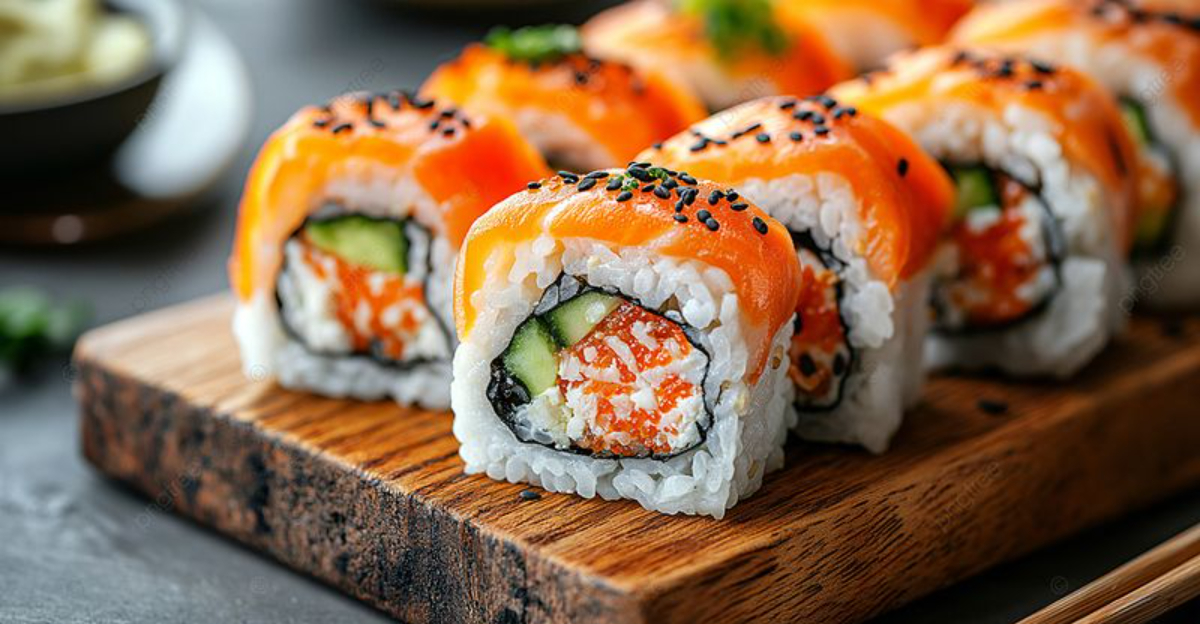20 Foods That People Say They Can’t Stand Despite Never Trying Them

Have you ever noticed how quickly people are to judge certain foods, without even trying them? We’re a funny bunch, often turning our noses up based on appearance, smell, or something someone once said.
So, I’ve put together a list of 20 foods that get a bad rap, even though many folks have never actually taken a bite. Maybe it’s time to challenge a few food biases. You might be surprised at what you end up loving.
1. Slimy Oysters
Raw oysters get a bad rap from texture-phobes everywhere. The mere mention of slurping something ‘slimy’ sends shivers down spines.
I remember my first oyster experience at a fancy restaurant—I almost backed out until my date dared me. That briny, oceanic flavor was nothing like I’d imagined!
Most oyster-haters are really just afraid of the unknown.
2. Brussels Sprouts Paranoia
The mini-cabbage reputation precedes these nutritional powerhouses. Countless adults still carry childhood trauma from overcooked, sulfurous Brussels sprouts forced upon them by well-meaning parents.
Modern cooking methods like roasting with bacon or maple glaze transform these veggies completely. Most Brussels-haters are judging based on horror stories rather than the caramelized, nutty flavor they actually offer when prepared properly.
3. Tofu Terror
Bland, mushy, weird—tofu gets slandered with these adjectives by people who’ve never let it cross their lips. This protein-packed soy product becomes a flavor sponge in skilled hands.
During my college years as a broke vegetarian, I discovered tofu’s chameleon-like abilities. Crispy fried, marinated, or silky in soups, tofu transforms based on preparation.
The haters are missing out on its incredible versatility and ability to adopt flavors.
4. Blue Cheese Boycott
Blue cheese suffers from an image problem—those blue-green veins are actually edible mold! This fact alone sends potential tasters running.
What they’re missing is a complex flavor journey from creamy to tangy to slightly spicy. The distinctive pungency adds incredible depth to salads, burgers, and dressings.
I’ve converted numerous blue cheese skeptics with just a tiny taste on a perfectly ripe pear slice.
5. Sushi Suspicion
“Raw fish? No thanks!” The knee-jerk reaction to sushi ignores this culinary art form’s incredible variety and flavor profiles.
Skeptics don’t realize many sushi options contain no raw fish at all. California rolls, tempura shrimp, or vegetable maki provide perfect entry points.
The balance of vinegared rice, nori, and fresh ingredients creates harmonious bites that bear no resemblance to “fishy” stereotypes.
6. Liver Loathing
Liver tops many “won’t try” lists based solely on its reputation and distinctive aroma during cooking. This nutrient powerhouse gets unfairly categorized as depression-era punishment food.
My grandmother’s secret was soaking it in milk before cooking, which removed any bitterness. When transformed into pâté or properly seared with onions, liver offers a rich, buttery flavor unlike any other protein.
Most liver-haters are reacting to poorly prepared versions they’ve never actually tasted.
7. Okra Opposition
Slimy. Gooey. Weird. Okra’s texture gets bad press from people who’ve never experienced it properly prepared. This nutritious green pod contains natural thickeners that create its unique mouthfeel.
Quick-cooking methods like roasting, grilling, or frying eliminate the slime factor completely. In gumbos and stews, okra’s thickening properties become an asset rather than a liability.
The grassy, slightly sweet flavor converts most who give it a fair chance.
8. Kimchi Criticism
Fermented cabbage with garlic and chili sounds intimidating to the uninitiated. The pungent aroma keeps many potential fans at arm’s length.
Once you get past the initial sensory experience, kimchi offers a complex flavor journey: tangy, spicy, umami-rich, and refreshing all at once. I’ll never forget my Korean roommate’s homemade kimchi converting our entire apartment building!
The probiotic benefits are just a bonus to this addictive condiment.
9. Durian Dismissal
The infamous “smells like hell, tastes like heaven” fruit gets automatic rejection based on its powerful aroma. Hotels throughout Southeast Asia ban it from their premises.
Beneath that spiky exterior and admittedly challenging smell lies a custard-like flesh with complex sweetness. The flavor combines notes of vanilla cream, almond, and caramel with subtle savory undertones.
Most durian-haters have only experienced its smell from a distance, never its fascinating taste.
10. Escargot Evasion
Garden snails transformed into gourmet fare face immediate rejection from those who can’t separate the garden pest from the delicacy. The mental image alone is enough for most.
Prepared properly, escargot offers tender, meaty bites bathed in garlic butter and herbs. The texture resembles mushrooms more than anything intimidating.
During my semester abroad in France, I watched countless fellow students transform from horrified to hooked after one properly prepared bite.
11. Sardine Skepticism
Tiny canned fish with heads and tails intact? The visual alone keeps many potential fans from discovering sardines’ rich flavor and impressive nutritional profile.
These sustainable seafood options pack incredible omega-3s and calcium into small, affordable packages. Mashed on toast with lemon and herbs or added to pasta, they provide savory depth without overwhelming fishiness.
Most sardine-avoiders haven’t tried modern, high-quality versions packed in olive oil.
12. Offal Avoidance
Hearts, kidneys, sweetbreads, and other organ meats face immediate rejection based solely on their origin. “I don’t eat organs” comes from people who’ve never experienced their unique flavors.
These traditional ingredients create some of the world’s most celebrated dishes. Tender, mild sweetbreads bear no resemblance to their anatomical source.
My first taste of properly prepared beef heart tacos at a Mexican restaurant completely changed my perspective on these sustainable, nutrient-dense meat options.
13. Beet Bias
Earthy, vibrant beets get dismissed as “tasting like dirt” by those who’ve never experienced them properly prepared. Their intense color and strong aroma create immediate prejudice.
Roasted to caramelized sweetness or raw and crisp in salads, beets offer complex flavor beyond their earthy reputation. The natural sweetness pairs beautifully with tangy goat cheese or citrus.
Most beet-haters have only encountered sad, canned versions rather than fresh preparations.
14. Eggplant Embargo
The spongy texture and bitter reputation keep many potential fans from discovering eggplant’s versatility. “Mushy” and “bland” are common complaints from those who’ve never actually tried it.
Properly salted before cooking to draw out moisture, eggplant becomes creamy and absorbs flavors beautifully. From smoky baba ganoush to crispy eggplant parmesan, the preparations are endless.
I converted my eggplant-hating husband with one perfectly grilled slice topped with miso glaze.
15. Mushroom Mistrust
Fungus for dinner? The very concept sends shivers through mushroom-phobes who’ve never experienced their umami magic. The spongy texture and woodland appearance create immediate prejudice.
Beyond basic button varieties lie worlds of flavor: meaty portobellos, delicate chanterelles, and earthy morels. Properly sautéed until golden, mushrooms transform completely from their raw state.
Most mushroom-avoiders have only encountered soggy, undercooked specimens on pizzas or in soups.
16. Cilantro Condemnation
While some genetic predisposition causes cilantro to taste like soap to certain people, many cilantro-haters have never actually tried it.
This bright, citrusy herb adds fresh dimension to countless global cuisines from Mexican to Thai. I’ve watched friends swear they hated cilantro until discovering they’d been confusing it with parsley all along!
For those without the soap gene, cilantro adds irreplaceable brightness to dishes.
17. Caviar Condescension
Fish eggs served as luxury food? The concept alone sends many potential tasters running before they’ve experienced caviar’s unique appeal. The price tag doesn’t help either.
These tiny pearls offer a burst of briny flavor and delicate texture unlike anything else. Served traditionally on blini with crème fraîche or modern-style atop deviled eggs, good caviar isn’t fishy but rather subtly oceanic.
Most caviar critics have formed opinions based on reputation rather than taste.
18. Frog Legs Fright
Amphibian appendages for dinner? The mere concept sends shivers through those who can’t separate the pond creature from the delicacy. “Tastes like chicken” doesn’t convince the skeptics.
Tender, mild, and delicate, properly prepared frog legs offer a unique protein experience. The texture falls somewhere between chicken and fish.
During a culinary tour in New Orleans, I watched an entire group of squeamish tourists transform into frog leg enthusiasts after one taste of Cajun-spiced, crispy specimens.
19. Olives Opposition
Intensely flavored and uniquely textured, olives face rejection from those who’ve never explored beyond basic black pizza toppings. The distinctive brininess creates immediate aversion.
The olive world offers incredible diversity: buttery Castelvetranos, spicy Calabrians, or rich Kalamatas. Each variety brings its own character to dishes. My olive journey began when a Greek friend insisted I try her grandmother’s marinated olives.
That first complex, fruity bite opened an entire culinary world.
20. Pickled Herring Hesitation
Preserved fish in vinegar or cream sauce sounds like a dare rather than dinner to the uninitiated. This Scandinavian staple faces immediate rejection based on description alone.
The complex flavors, tangy, sweet, and savory, create a surprisingly balanced bite. Traditional preparations with dill, onions, and rye bread showcase why this preservation method has endured for centuries.
Most pickled herring skeptics have formed opinions without ever experiencing its nuanced flavor profile.
